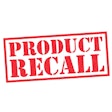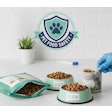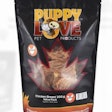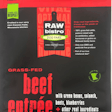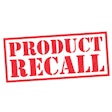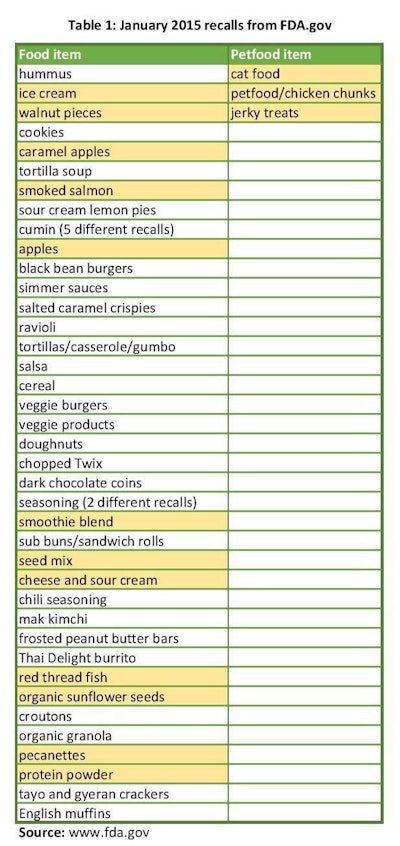
In February 2015, a lawsuit was filed against Nestle-Purina PetCare Company alleging that thousands of dogs have been sickened or died as a result of eating Beneful dog food. Search online for every major brand of petfood and you will read eerily similar reports posted by pet owners. But is there any accuracy to these claims?
“We believe the lawsuit is baseless, and we intend to vigorously defend ourselves and our brand,” said Bill Salzman, Nestle-Purina’s director of corporate communications.
Much of the ability of a company to be confident that there is not a problem lies in the truth of numbers. When a petfood brand sells 10,000 bags of a single batch of food and they receive one reported pet illness, would this indicate a food safety issue? Most certainly not. True food safety issues result in trends that are indisputable, numerous reports from a single manufacturing site, a single formula or a single batch of food.
The number of recalls on human food items eclipses the recalls in petfood, but consumer reaction to petfood recalls is swift and emotional. Many, if not most, of the issues that are reported online are not related to recalled product, but product deemed safe by the manufacturer. Table 1 represents food and petfood recalls in January 2015. The highlighted items are recalls for bacterial contamination—12 for human food items and three for petfood items.
With FSMA in play, manufacturers must meet stringent quality and safety requirements. Many companies utilize test and hold procedures, holding product until the results of third-party bacteria and toxin testing comes up negative.
According to Veterinary Pet Insurance, based on claims submitted by their policyholders, vomiting or an upset stomach was the sixth most common reason dog owners visited the veterinarian and intestinal inflammation or diarrhea was the seventh most common. For cats, vomiting or an upset stomach was the fifth most common reason cats were taken to the veterinarian and diarrhea or intestinal upset was the seventh most common reason. There is a reason that many of the online concerns reported issues involve digestive upset; simply put, it is a common condition that affects pets.
When there is all this chatter online about petfoods harming pets, what is happening in your customer support department? Whenever a recall or hot news story occurs, call and email volumes increase, whether or not your brand is impacted. In a recent social media storm affecting a private label brand of petfood, call and email volume increased from a normal pace of 25 per week to more than 120 per week. Despite the fact that this was not a recall and there was not a product safety issue, the increased volume necessitated immediate response to help quell the fears and calm the social media storm.
When volume spikes, it is necessary to have adequate resources to respond. Customers that are reacting emotionally to something they have read or heard cannot be put off for five days waiting to receive a response. This only fuels the hysteria and causes new conversation regarding lack of response or accusations of “hiding” from the problem. Customer support staff must be trained quickly and given the proper information to respond to the inquiries. Standard policy statements need to be used so that the message does not wander or vary. When a customer support team member is unable to adequately resolve the issue, a clear escalation protocol must be in place.
All platforms that are currently in use for communications or customer support need to be adequately covered. This means that phones need to be answered, emails responded to, Facebook posts answered and tweets replied to. If your company uses only a single channel for communication, make sure this channel is covered and do not introduce new channels at this critical time. Outsourcing to a reputable third-party provider is essential if you do not have the trained staff members to deal with the increased volume. Identifying potential partners ahead of a crisis is crucial. This is not the time to bring in an untrained temporary employee, unless that person’s role is simple organization and routing of the incoming queries.
Many consumers will reach out for reassurance, but higher numbers of adverse event reports will be made as well. What is the best approach to investigating reported issues?
Comprehensive collection and recording of the information is a necessity. Whatever platform is currently in place for collecting consumer contact information and the subject of the inquiry should also be used to capture the data in these situations. The system should be easy to use and capable of generating detailed reports. Batch or lot information should be captured in such a way that reports for trends clearly show a potential issue or lack thereof. Review of quality and safety testing results for every reported issue is also necessary.
When veterinary care is involved, obtaining veterinary records and speaking directly with veterinarians can be extremely beneficial for ruling out a problem with the food. Clear communication with the consumer will go a long way to foster loyalty, good relations and positive social media comments.






